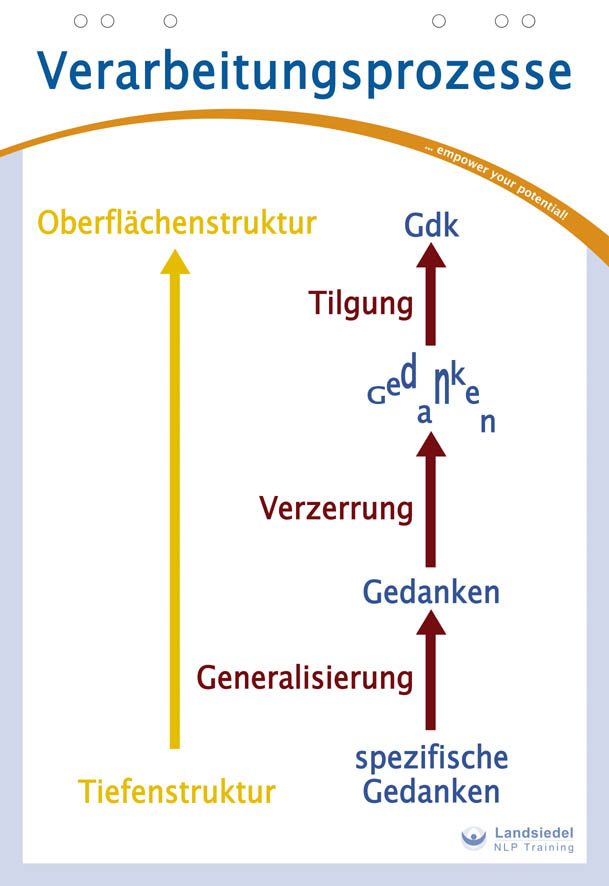The Transformational Model: A Quick Overview
Noam Chomsky developed the theory of transformational grammar, which forms the foundation of the NLP Meta Model.
This short introduction explains the main ideas behind the transformational model.
In every language, there are many rules, most of which are determined by grammar. In German (and other languages), we can distinguish three types of rules:
1. Well-formedness, 2. Unit Structure, 3. Logical–Semantic Relationships.
1. Well-Formedness:
Which of the following three sentences sounds well-formed?
- Even professors have language problems.
- Even professors have dotted flaws.
- Even professors has language problems.
The first sentence is well-formed — complete and grammatically correct.
The second sentence sounds well-formed but its meaning is unclear; it is semantically ill-formed. (Semantics = the study of word meanings).
The third sentence is syntactically ill-formed, meaning grammatically incorrect. (Syntax = the study of sentence structure.)
2. Unit Structure:
Sentences can be divided into meaningful units that belong together. This is easy to see in the following example:
- The Maharajah of India believed the Maharani would eat.
“The Maharajah” and “of India” form one unit. They belong together. “The Maharajah” and “would” do not form a unit.
3. Logical and Semantic Relationships
Whether a sentence makes logical sense or not depends on linguistic intuition. There are five criteria that determine whether a sentence is logically meaningful:
- Completeness
(Whenever we hear a verb, we can identify what information is needed for the sentence to make sense. These necessary pieces of information are called “valencies.”) - Ambiguity
(Sentences can convey different meanings. Example: “The investigation by policemen can be dangerous.” Possible meanings: a) The investigation carried out by policemen can be dangerous. b) Investigating policemen can be dangerous.) - Synonymy
(Sentences that express the same meaning. Example: Susan looked up the address. / Susan checked the address.) - Relational Indices
(Hints that show relationships between words. Example: My car is fantastic.) - Presuppositions
(Sentences that imply additional information. Example: My dog ran away. This presupposes that I have a dog.)
The surface structure of a sentence is what is literally said. It can be represented in a structure tree, showing how words form meaningful units.
Example: “The Meier couple bought a house.” This sentence can be divided into three structural units: “The Meier couple / bought / a house.”
The deep structure represents the full, meaning-complete sentence.
Example: “The Meier couple bought a house from their neighbors with money.”
A transformation is the conversion of a sentence from its deep structure into its surface structure.
If a deep structure is linked to more than one surface structure, this is called a synonymy transformation.


 Deutsch
Deutsch English
English Français
Français 中文
中文 Español
Español नहीं
नहीं Русский
Русский